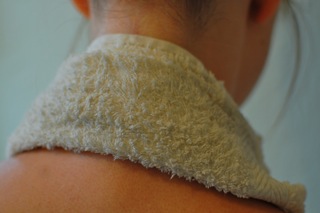Shoulder pain and muscular tension – 4 Top Tips to reduce it!
Shoulder pain and muscular tension – 4 Top Tips to reduce it!
Shoulder pain is something that many of us suffer from on a day to day basis but tend to ignore or do nothing about. Shoulder pain is often a pain or discomfort that is enough to annoy us but not serious enough for the majority of us to act on. This is definitely the wrong attitude.
Many of those who work in an office or desk based job can get shoulder pain through stress, poor posture and staring at a computer screen for long periods. Having your workstation set up correctly is vital in helping to reduce any aches, pains or discomforts whilst working at a desk, but there are also several self-help methods you can use to reduce the chances and symptoms of shoulder pain.
There are lots of different types of shoulder pain and if you’re unsure whether yours is muscular or not, be sure to visit your doctor or a professional for advice. It’s always best to seek professional help, so be sure to do so if necessary.
On the plus side, here are four top tips on helping to reduce shoulder pain.
- Trigger point balls – For those that don’t know, a trigger point ball is a small, firm, circular ball designed to help relax and relieve tension within a muscle. These balls are fantastic at helping to relieve shoulder pain when used correctly. Applying pressure using the trigger point ball can help to reduce pain and discomfort. This pressure reduces the muscular knots that can often cause pain discomfort and restriction. Check out our YouTube video where we show you how to reduce your tension using the trigger point ball
We recommend these trigger point balls because they come in three different densities. Mild, Medium and Hard. These options allow you to start with the ball with less pressure and work your way up when necessary. Recommended trigger point balls
- Stretching – When it comes to stretching, it’s one of the most underused methods of reducing muscular tension and tightness. Stretching helps to lengthen muscles, increasing flexibility and joint mobility. When the muscles lack movement and mobility this can cause pain, tension and discomfort. Performing some simple stretches can help to reduce this. Tilting your head to the side and holding this stretch for a minimum of 30 seconds can often provide instant relief. Continuing stretches like this can contribute massively to combating against the tension gained through your working day.

- Heat – Heat therapy can be a great self-method in reducing shoulder pain and tension. Applying a heat pack or hot towel to your shoulders helps to relax the muscles. The heat encourages extra blood to the area causing the muscles to relax and become more subtle. It’s important not protect your skin and not to apply anything too hot that could potentially burn your skin.

- Massage – Massage has been used as an alternative therapy for many years to aid with reducing shoulder pain and muscular tension. Massage helps to break down any knots and tight spots which may be causing or contributing to the shoulder pain you’re getting. Remedial Massage in particular can really target the specific areas of the shoulder that might be causing your pain. A skilled therapist will assess and treat your pain and offer advice and support on what to do in your own time to help further.



